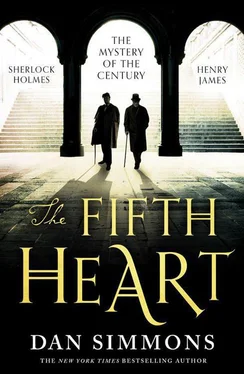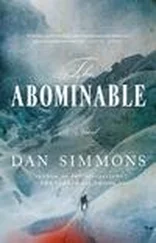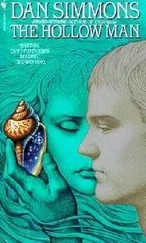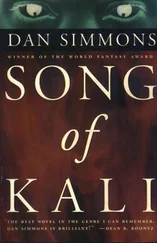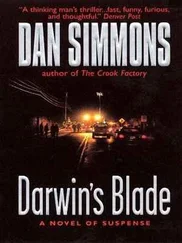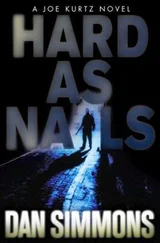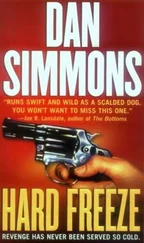Holmes made a mental note that the massive robed figure was seated on an indistinct bench or boulder which lay against the upright granite block. The figure’s feet—invisible beneath the shadows of robe—rested upon a large, flat stone some three feet across, the stone in turn on the horizontal hearthstone of granite coming out from the vertical block.
As one moved to the left or right, the figure’s eyes—as cowled as the sculpture’s head—seemed to follow the viewer. The folds of the robe lay heavy between the bronze sculpture’s covered knees, which were already slightly shiny from the touch of human hands.
“Does the piece have a name?” asked Holmes, still moving to the left and right and sensing the shadowed eyes following him.
Adams sat on the bench opposite the form. He folded one leg over the other. “I want to call it ‘The Peace of God’,” he said. “But that isn’t quite right, is it? There is something beyond peace—or short of it—in this sculpture. My artist friend La Farge calls it ‘Kwannon’ after the counterpart we saw in Japan to the Chinese Kuan Yin. Petrarch would say: ‘Siccome eternal vita è veder Dio.’ I would think that a real artist—or deep soul—would be very careful to give it no name that the public could turn into a limitation of its nature.”
“The benches?” asked James, turning to look in Adams’s direction.
“Oh, Stanford White designed the benches and plantings, and obviously fell even further from my wish for the Oriental than did Saint-Gaudens. White’s workers had the site covered by a tent for more than a month in the winter of ’ninety. But the griffon wings . . . not exactly in the Sakyamuni tradition that La Farge and I had in mind when we returned from Japan. Although this sculpture is, I think, the ultimate Saint-Gaudens—the most anyone could ask for or receive from this great artist’s core of being.”
Turning back to look again at the sculpture, James said, “Does Saint-Gaudens have a name for it?”
“Several,” said Adams. “His favorite—the last time I heard anyone ask—is The Mystery of the Hereafter —but he knows that is not adequate. Saint-Gaudens’s native language is stone, not words.”
“ ‘I am the doubter and the doubt’,” said James.
“Yes,” said Adams.
“I don’t recognize the reference,” said Holmes.
“The poem ‘Brahma’ by Emerson,” said Henry James and recited:
If the red slayer think he slays ,
Or if the slain think he is slain ,
They know not well the subtle ways
I keep, and pass, and turn again .
Far or forgot to me is near ,
Shadow and sunlight are the same ,
The vanished gods to me appear ,
And one to me are shame and fame .
They reckon ill who leave me out;
When me they fly, I am the wings;
I am the doubter and the doubt ,
And I the hymn the Brahmin sings .
The strong gods pine for my abode ,
And pine in vain the sacred Seven;
But thou, meek lover of the good!
Find me, and turn thy back on heaven .
Holmes nodded.
“When I was in India, trying to meditate beneath the sacred bo tree . . . which was as small as a twig now in modern times,” said Adams, “I wrote my own poem in which I attempted to summarize the truly transcendental moment. I failed even worse than Emerson had.”
“Tell us the poem, please, Henry,” said James.
Adams started to shake his head but spread his arms wide on the back of the bench and said softly:
Life, Time, Space, Thought, the world, the Universe
End where they first begin, in one sole Thought
Of Purity in Silence .
Then, startling both James and Holmes, Adams laughed quite loudly. “Pardon me,” he said after a moment. “But the Emerson poem reminds me of something that Clover wrote to her father in the winter of . . . eighteen eighty, I think it was. I believe I can quote it correctly— A high old-fashioned snowstorm here: the attempts at sleighing numerous and humorous. ‘If the red sleigher thinks he sleighs,’ Ralph Waldo Emerson would point him to the Brighton Road for the genuine article .”
Holmes and James laughed softly at this. James caught Holmes’s eye and said, “I think I’m going to take a stroll out there amongst the headstones. I shall return in a few minutes.”
When James had edged his way out through the small opening in the greenery, Adams stood and said, “Good. Mr. Holmes, you and I must now speak in earnest.”
* * *
“I know why you’re here, Holmes,” said Adams. “Why you came to Washington. Why you dragged poor Harry with you.”
“Hay told you,” said Holmes. He leaned forward, both hands on his stick, as Adams remained seated.
“No. He hasn’t . . . yet. But he will. John could never allow me to look or play the fool for long. We’re more than friends, Holmes. We’re like brothers.”
Holmes nodded, wondering just how much Adams knew or suspected.
“But I knew at once that you’d come to solve the so-called ‘mystery’ of the cards we surviving Hearts receive on the anniversary of Clover’s death,” said Adams. “So . . . have you?”
“Solved it?”
“Yes.” The syllable snapped in the languid afternoon air like the tip of a whip.
“No,” said Holmes. “I do know that the cards were typed on Samuel Clemens’s typewriter. I looked at a list of the Clemenses’ guests from Christmas eighteen eighty-five through December ’eighty-six . . . the time during which the cards were typed.”
“And have you narrowed the list down?”
Holmes opened his hands palms outward even as the heel of one hand kept pressure on his cane. “Rebecca Lorne and her cousin Clifton spent a night there that year. So did Ned Hooper. So did all of the remaining Hearts save for Clarence King. So did you , Mr. Adams.”
Adams nodded tersely. “You actually suspect Rebecca Lorne?”
Holmes removed a photograph from his jacket pocket and stepped forward to hand it to Adams. It was part of a program for a Polish opera, and the diva whose photograph was on the front was the British singer and actress Irene Adler.
“It could be the same woman,” said Adams. “It’s hard to tell with the dramatic make-up and hairdo. Miss Lorne always dressed herself plainly.”
“It is the same woman,” said Holmes.
“What if it is?” said Adams. “That solves nothing.”
“How did you know my reason for being here if Hay or James did not tell you?” said Holmes. “Ned Hooper, I presume.”
Adams smiled, handed the photo back, and crossed his arms. “I loved Ned Hooper and was crushed when we learned of his death this past December. Before that, Ned came to me almost every year, in private, begging me to bring the authorities into the so-called mystery of the December-six cards. Two years ago on New Year’s Day he promised . . . threatened . . . to go to London to hire the famous detective Sherlock Holmes if I did nothing.”
“What did you say to him then?”
“I seem to remember saying that I thought the famous detective Sherlock Holmes was fictional,” said Adams.
Holmes nodded. The two men remained silent for a long moment. Somewhere outside their leafed-in space, a distant carriage clopped along one of the cemetery’s long, curving lanes.
“My beloved wife took her own life, Mr. Holmes,” Adams said at last, his voice low. “This is why I have not spoken of her or written about her except to the most intimate of my friends these past seven years.”
“Yet today you were speaking freely,” said Holmes.
Читать дальше
